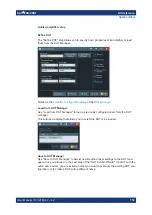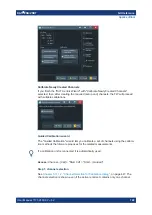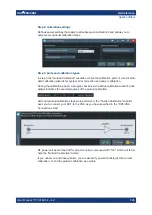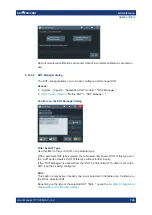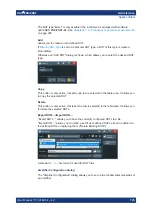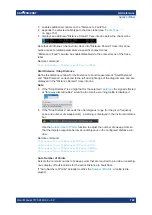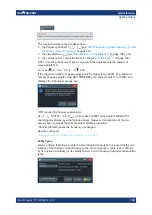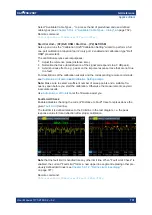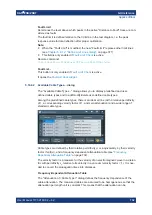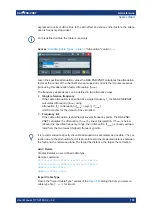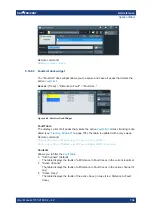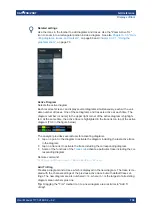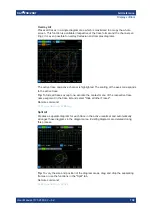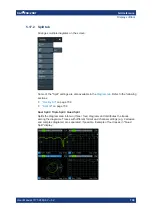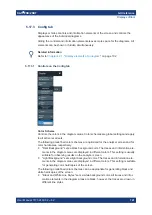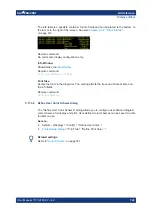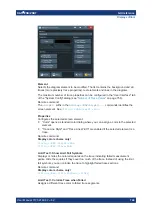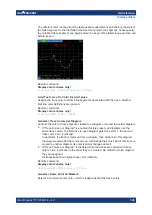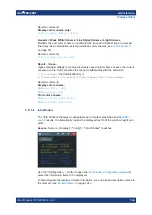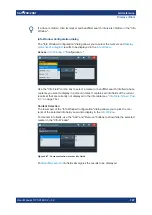
GUI reference
R&S
®
ZNB/ZNBT
732
User Manual 1173.9163.02 ─ 62
Fault Limit
Determines the level above which peaks in the active "Distance to Fault" trace are con-
sidered as faults.
The fault limit is defined relative to the 0
dB-line in the test diagram, i.e. the peak
response value for total reflection after proper calibration.
Note:
●
When the "Fault Limit" is modified, the new "Fault Limit" replaces other limit lines
(see
Chapter 5.6.1.2, "Define Limit Lines dialog"
●
This field is only enabled, if
Remote command:
CALCulate<Chn>:TRANsform:DTFault:PEAK:THReshold
Fault List...
This button is only enabled, if
is active.
It opens the
5.16.4.2
Available Cable Types... dialog
The "Available Cable Types..." dialog allows you to display predefined and user-
defined cable types and to add/modify/delete user-defined cable types.
Among the predefined cable types, there is an ideal air line (with a relative permittivity
of 1, a corresponding velocity factor of 1, and zero attenuation) and a wide range of
standard cable types.
Cable types are defined by their relative permittivity
εr
or, equivalently, by their velocity
factor
1/sqrt(εr)
, and a frequency-dependent attenuation table (see
The velocity factor is a measure for the velocity of an electromagnetic wave in a dielec-
tric with permittivity ε
r
, relative to its velocity in a vacuum (velocity factor < 1). It is nee-
ded to convert the propagation times into distances.
Frequency-Dependent Attenuation Table
The "Attenuation of <Cable Type>" dialog defines the frequency dependence of the
cable attenuation. The measured cables are assumed to be homogeneous so that the
attenuation per length unit is constant. This means that the attenuation can be
Applic softtool

